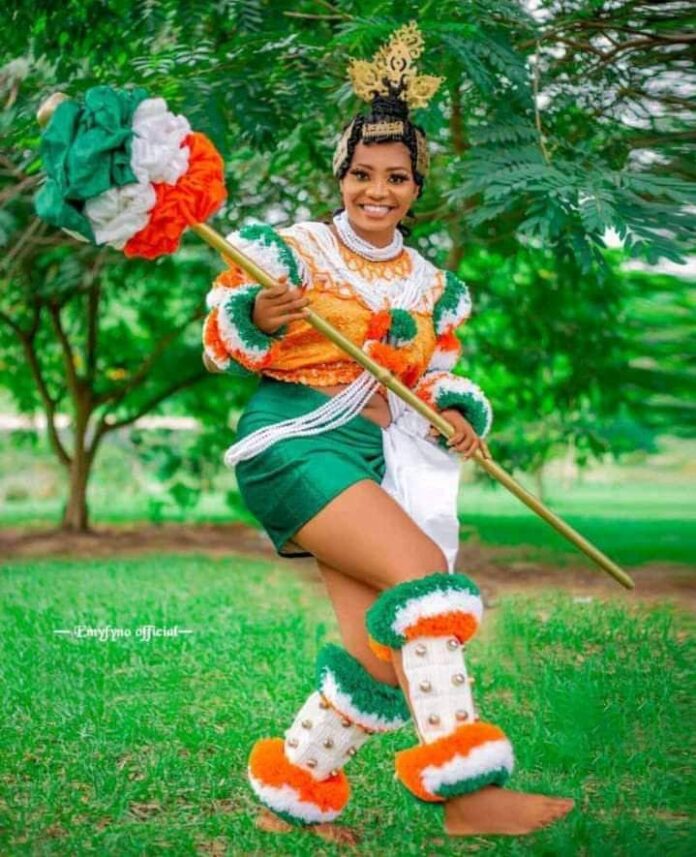Foremost, it is recalled that my most recentl academic journal publication, titled: NSIBIDI AS VISUAL COMMUNICATION AID TO MEDIA ARTS DEVELOPMENT IN NIGERIA, in E. Asemah (2023) (ed.) “Media, Communication and Society”; accepted equally for publication by International Journal for Media and Communication Research (IJMCR), offered adequate attention/ insights to the origins, meanings, prospects and challenges of NSIBIDI as “one of Africa’s most ancient civilizations and communications media that predated the advent of the English alphabets, invented by German’s Johann Guternberg in the 1400s, when the Efik, from their Oriental origin in Nubia-Northern Sudan, previously introduced it to then unborn Nigeria’s people (Hogan, 2023).
Contextually recall equally that Nigeria was colonially born through British amalgamation of her North, South and West territories (precisely called protectorates and Lagos colony) in 1914. Also that Efik arrived Nigeria prior to the 1300s they sojourned at the Igbo and Ibibio countries and later became the first to settle/naturalize in Old Calabar as Enwañ et al.
NOW TO THE SUBJECT
One of the oldest and most practised meanings of Nsibidi is that which religiously, socially, culturally, ritually or ethically upholds it as a body of institutionally authorized heritage or systemic communication practice that uses esoterica, pantomime or generally accepted sign language codes or modes to encode, decode highliy restricted, classified info to mostly initiates, authorized/ learned few (Hogan, 2023).
Accordingly, given that Ekömbi is a pantomimic art of gracefully moving the human body in time and space to suit provided music and standards, as an immitation or similitude of observed ocean/sea tidal movement, it is implicit that it conveys a lot of known and unknown symbolic ideas and meanings in its sign language communication modes and codes, beyond the physical to the spiritual, for those who truly understand that aspect of it in “Mbaya Idem Udö”, the distant and often less popularized female cousin of “Nsibidi Idem Udö” (Hogan, 2023).
Further contextually recall that I have severally and previously dymistified, debunked or rightly highlighted the fact that the origin and relationship of Ekpe franternity/cult and Nsibidi, though shrouded in mystery and rendered as a taboo to non Ekpe initiates, including women, doesn’t negate the fact that a major part of the original source of Nsibidi, as first defined by Goldie (1864), published by Maxwell (1904) and later copied and misrepresented by McGregor (1909), Tabolt (1912/15), Jeffrey (1963), Noah and Essien (2005) et al, nature, society and women whom history records to have issued the first published Nsibidi signs through an Henshaw Town female Chief in Old Calabar (c.1900).
Besides, it is historically known that Ndem Efik mostly have female priestesses and acolytes as their lead actors, adorers, forerunners, theophanic symbols, venerators and oracles, to whom they teach or show hidden mysteries/secrets they only reveal when appeased through Nsibidi signs and pantomime used in Ekömbi, during state ceremonies/official religious festivals in the ancients. Little wonder “Ekanyin Añwan Idem”, used basically to infer Ndem or her Chief Priestess (es) is commonly heard in eulogies (Ase), Ballard (Uto) or song (Ikwö) intended to appease, consult or venerate Ndem in Efik. This asserts the poetic link between Ekömbi, Nsibidi and Ndem worship as it was in the ancients and now…to initiates and/or believers.
However, the deliberate use of INITIATES and BELIEVERS suggests away from unguided misconception that anything that demonize Ekömbi to the contrary is purely ignorance, hence discarded because its general social, cultural or theatrical practice has nothing to do with marine spirits connections.
TO BE CONTINUED!
Holyns Hogan writes from the ancient port city of Calabar










